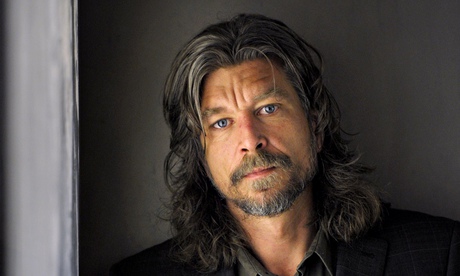
Don't let his status as highbrow crush du jour put you off: like WG Sebald in the 1990s and Roberto Bolaño in the 2000s, Karl Ove Knausgaard is a writer strong enough to survive the hype. Sebald wrote about the Holocaust; Bolaño drew on a real-life murder epidemic in a Mexican factory town; Knausgaard writes about Knausgaard. His sprawling six-part memoir-novel My Struggle (Min kamp in the original Norwegian) is a masterpiece for the age of the selfie, seesawing through the author's first 40 years on a tide of exhaustive, purgative recollection. Brutally frank about the frustrations of marriage, work and parenthood, it's often horrifying and deeply funny.
Instalments have been appearing in English annually since 2012. Part one, A Death in the Family, recounted the author's rural adolescence before exposing the squalor in which his father passed his final years. "Dad", otherwise unidentified for legal reasons, was a teacher and local councillor who dropped dead when Knausgaard was 29, following a midlife crisis that saw him change his name and start a new family before he turned to drink and moved back in with his own mother, also an alcoholic. After his death, Knausgaard and his older brother discover piles of clothes caked in excrement, empty bottles and half-eaten ready meals on every surface.
Part two was just as graphic. In A Man in Love (these titles come from the British publishers), Knausgaard ditches his wife to move to Stockholm and marry a poet. His response when she first spurns his advances – he's still married at the time – is to cut his own face with glass. They have three children, described without irony as an "invasion" that imperils a longed-for magnum opus. Time, he complains, is "running through my fingers like sand while I… do what? Clean floors, wash clothes, make dinner, wash up, go shopping, play with the children in the play areas, bring them home, undress them, bath them, look after them until it is bedtime, tuck them in, hang some clothes to dry, fold others and put them away, tidy up, wipe tables, chairs and cupboards."
In America, it's been argued that Knausgaard fails to appreciate his good fortune in living in Sweden, where the state helps him raise a family on what he and his wife make from writing. It may be the prickliest way to say what Knausgaard's sceptics often suggest – that he should lighten up. He almost begs for the response, and not just in his title. His caveat to the admission that his kids do after all bring him joy is 24-carat Scandi-gloom: "Joy is not my goal, never has been, what good is joy to me?"
Boyhood Island, the latest volume to come out in English, makes clear that, with a father like Knausgaard's, anyone might struggle to turn their frown upside down. "Dad had got what was coming to him, it was good that he was dead," the first book told us. Part three shows us what a tyrant he was, as the author recalls life on a housing estate in 1970s Norway from ages six to 13. Time and again the young Knausgaard is sent to bed without supper for such crimes as losing a sock or switching on the TV. One evening his father gives him an apple. "Thanks, but I only eat one a day," the boy says. His father counters that he saw him eat two the previous evening. So in the apple goes. "Here's another. This is your lucky day." Knausgaard forces it down before his father inflicts a fourth on him. "I hope that has taught you a lesson."
Zadie Smith tweeted after reading A Man in Love that she needed this book "like crack". But even the most avid Knaus-fiend might concede that this isn't the revelation past volumes were, partly because the injustices of boyhood are better documented than those of fatherhood, but mainly because Knausgaard fixes the point of view to his child self; gone is the fluid structure that drifted between the remembered moment and the moment of remembering. Outside the domestic psychodrama the action is much as you'd expect: stuff about masturbation and pissing contests, drumming in a punk band, and the torment of having to wear the women's swimming cap his mum buys him. Knausgaard spends a lot of time with the word "Trauma" on his back – the name of his junior football team, as he explains solemnly to an amused visitor.
In A Death in the Family, Knausgaard recalls hearing that his mother once threatened to leave when he was small because his father had thrown him in an ice-cold bath to stop him crying. She stays; it's his father who leaves. The puzzle of why he went off the rails after torturing his sons seems to be what inspired My Struggle: apparently Knausgaard spent years trying to put him into a novel, succeeding only once he turned his back on almost a decade of creative writing study to let himself spill out his prose rather than pare it down. While Boyhood Island shows no sign he'll solve the mystery of Knausgaard Sr, reports suggest the final volume announces his retirement from writing altogether, so it's more than just hyperbole to say he's given it everything he's got.

